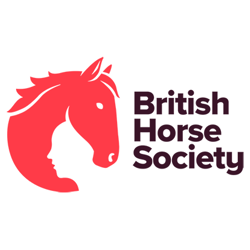| 1. Understand how to maintain a horse’s training for dressage |
1.1 Explain how the Training Scale impacts on a horse’s performance |
Performance through the horse’s work which may include:
- Working the horse in all three paces
- Lengthen and shorten horse’s stride
- Transitions between paces
- Lateral work for example; leg yielding, turn on and about the forehand
- Consideration of the horse moving forward from the leg aids to a contact with directional bend
|
Discussion |
| LEARNERS WILL BE REQUIRED TO RIDE TWO HORSES IN THIS SECTION |
| 2. Be able to ride horses to maintain their training |
2.1 Ride appropriate exercises to warm up the horses |
Appropriate exercises to include:
- Logical plan
- Walk on both reins
- Trot on both reins
- Canter on both reins
- Riding the horse forward toward a rein contact
- Transitions
- Awareness of others in the arena
|
Observation |
| 2.2 Assess the horses’ way of going |
Assessment may include:
- Horse conformation
- Working the horse in all three paces
- Lengthen and shortening the horse’s stride
- Transitions between paces
- Lateral work (e.g., leg yielding, turn on and about the forehand)
- Consideration of the horse moving forward from the leg aids to a contact with directional bend
- In relation to the Training Scale
- Stiff hollow side and working outline
- Suitability to undertake a novice dressage test
|
Observation and discussion |
| 2.3 Use exercises to improve the horses’ way of going |
Exercises may include:
- Progressive work in walk, trot and canter
- Lengthening and shortening stride
- Transitions
- Lateral work
- Working in an outline
|
Observation |
| 2.4 Ride with an independent balanced position |
Independent balanced position to include:
- Balanced postural alignment
- Suppleness, movement and harmony with the horse
- Core strength and stability
- Co-ordination of aids to ride the horse effectively forward between leg and a receiving hand
- Ride without stirrups in walk, trot and canter
|
Observation |
| 2.5 Ride safely |
Riding safely to include:
- Use sympathetic aids riding walk, trot, canter
- Awareness of other users of the school
- Show respect and consideration for the horse and other riders
|
Observation |
| 2.6 Evaluate the session |
Evaluation to include:
- In relation to the Training Scale
- All three paces
- Responsiveness to aids, leg to contact
- Exercises used
- Horses’ outline
- Self-reflection of riding performance
|
Discussion |
